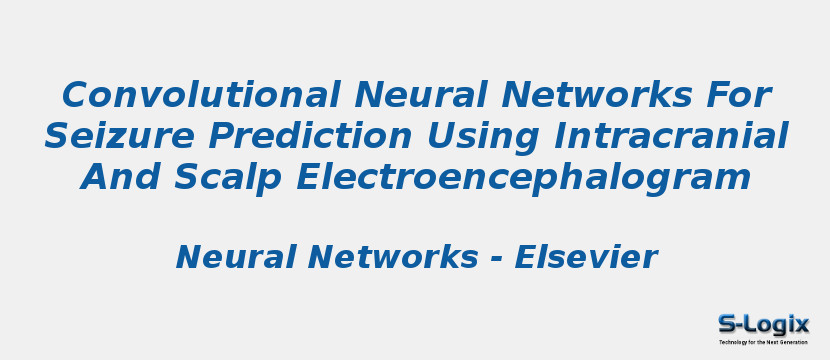Research Area: Machine Learning
Seizure prediction has attracted growing attention as one of the most challenging predictive data analysis efforts to improve the life of patients with drug-resistant epilepsy and tonic seizures. Many outstanding studies have reported great results in providing sensible indirect (warning systems) or direct (interactive neural stimulation) control over refractory seizures, some of which achieved high performance. However, to achieve high sensitivity and a low false prediction rate, many of these studies relied on handcraft feature extraction and/or tailored feature extraction, which is performed for each patient independently. This approach, however, is not generalizable, and requires significant modifications for each new patient within a new dataset. In this article, we apply convolutional neural networks to different intracranial and scalp electroencephalogram (EEG) datasets and propose a generalized retrospective and patient-specific seizure prediction method. We use the short-time Fourier transform on 30-s EEG windows to extract information in both the frequency domain and the time domain. The algorithm automatically generates optimized features for each patient to best classify preictal and interictal segments. The method can be applied to any other patient from any dataset without the need for manual feature extraction. The proposed approach achieves sensitivity of , , and 75% and a false prediction rate of 0.06/h, 0.16/h, and 0.21/h on the Freiburg Hospital intracranial EEG dataset, the Boston Children-s Hospital-MIT scalp EEG dataset, and the American Epilepsy Society Seizure Prediction Challenge dataset, respectively. Our prediction method is also statistically better than an unspecific random predictor for most of the patients in all three datasets.
Keywords:
Convolutional Neural Networks
Seizure Prediction
Intracranial
Scalp Electroencephalogram
Machine Learning
Deep Learning
Author(s) Name: Nhan Duy Truong, Anh Duy Nguyen, Levin Kuhlmann, Mohammad Reza Bonyadi, Jiawei Yang, Samuel Ippolito, Omid Kavehei
Journal name: Neural Networks
Conferrence name:
Publisher name: Elsevier
DOI: 10.1016/j.neunet.2018.04.018
Volume Information: Volume 105, September 2018, Pages 104-111
